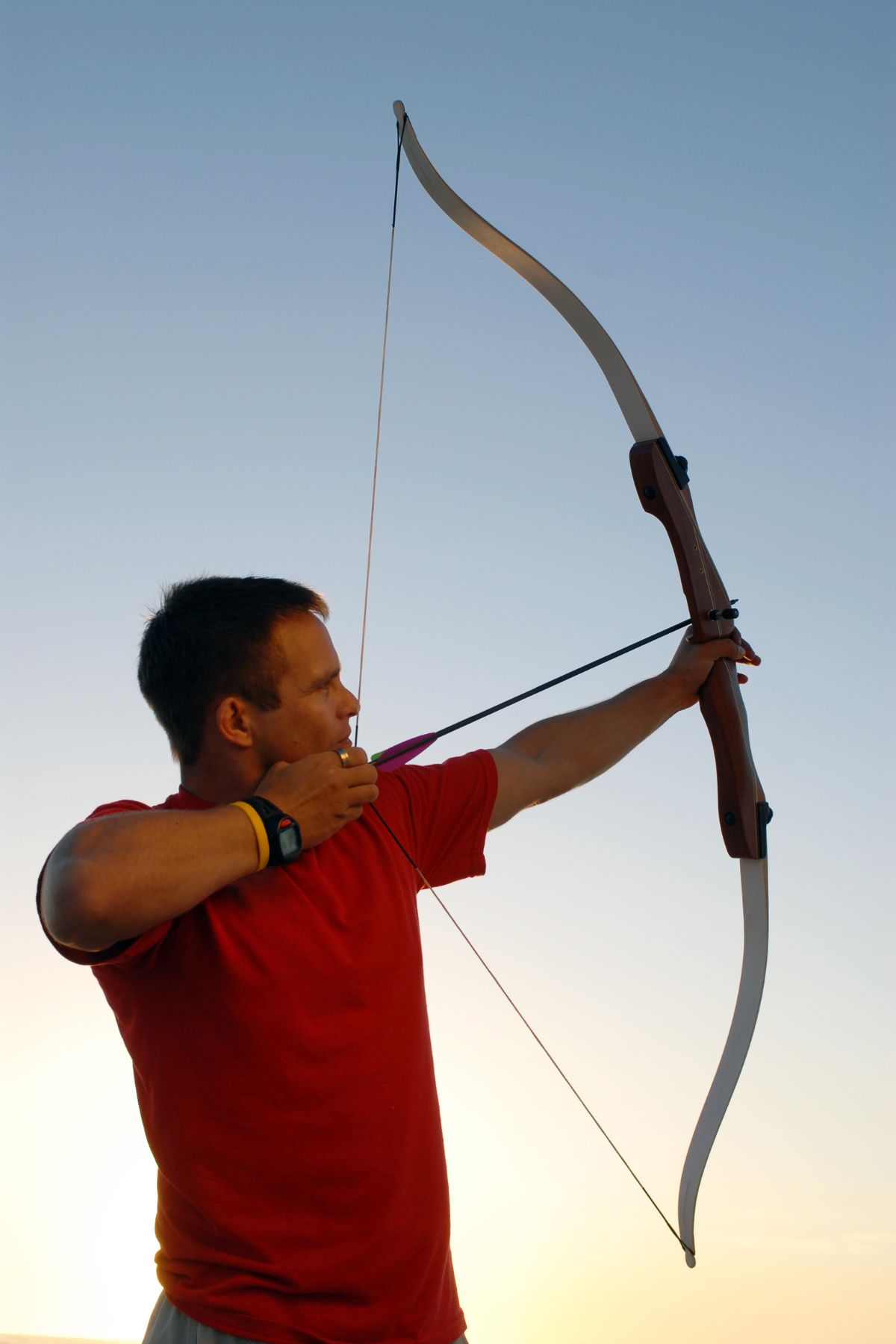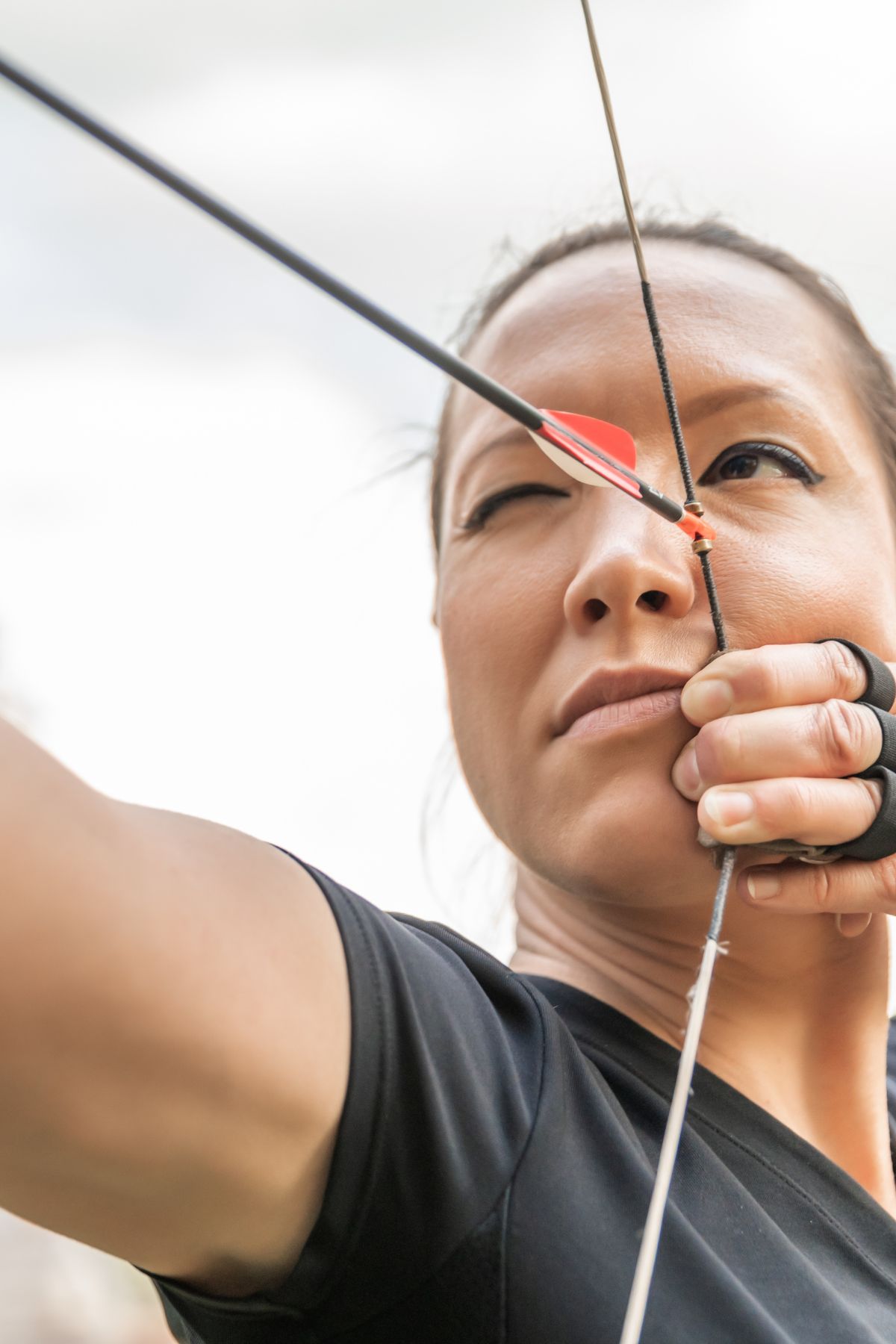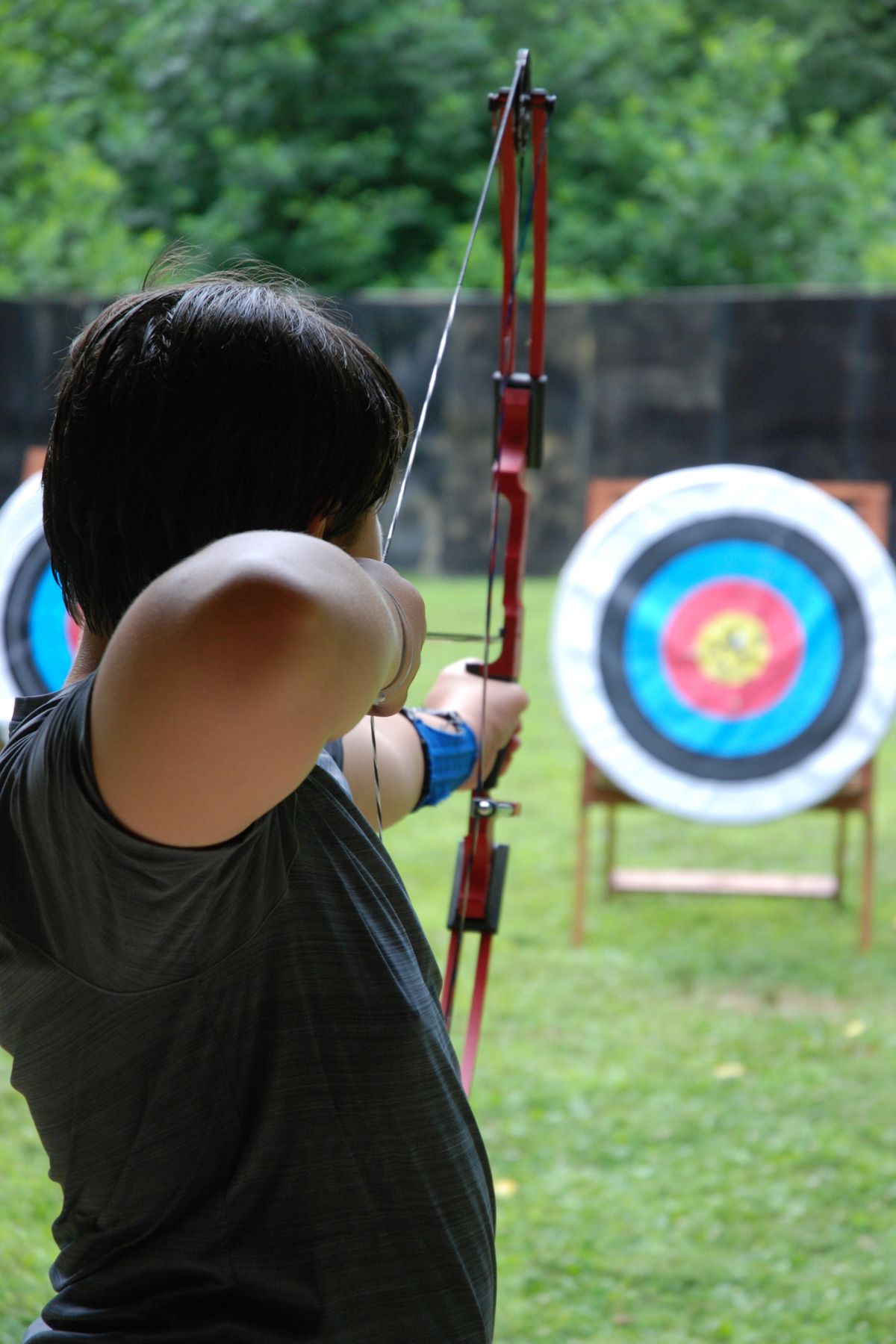Here is a Draw Length Calculator that you as an archer can use to improve accuracy, comfort, and performance.
Draw Length Calculator
Estimate your ideal draw length based on arm span or advanced settings.
Whether you’re setting up your first bow or fine-tuning your form after years of shooting, understanding your draw length is essential for consistency and precision. The draw length defines how far back you pull the string before release, and this measurement directly impacts everything from arrow flight to overall shooting posture.
When your draw length matches your body’s proportions, the bow feels natural—your shoulders stay relaxed, your anchor point is repeatable, and your arrows group tightly on target. But if it’s off, even by an inch, the results can be frustrating: poor accuracy, muscle strain, and reduced control. Too long of a draw length forces overextension, while too short can cause awkward body alignment and inconsistent release.

For many archers, using a Draw Length Calculator is the easiest way to establish a reliable baseline before investing in a bow or making adjustments. The calculator takes measurements such as arm span or height and converts them into an estimated draw length tailored to your shooting style. This gives you a personalized starting point that can later be refined through testing or professional fitting.
In this article, you’ll learn how draw length influences every aspect of shooting, what factors affect it, and how to use an online Draw Length Calculator effectively. By the end, you’ll understand not only the numbers behind your ideal setup but also how to apply them in the real world for greater confidence at the range or in the field.
Understanding Draw Length
Before you can use a Draw Length Calculator effectively, it’s important to understand what draw length really means and why it’s so central to your overall shooting performance. In simple terms, draw length is the distance between the bowstring’s nocking point (where the arrow attaches) and the pivot point of the bow grip when the bow is fully drawn. For compound bows, 1.75 inches are added to this measurement to align with the Archery Manufacturers Organization (AMO) standard, giving bow manufacturers and archers a consistent reference across all models.
This single measurement affects several interconnected elements of your setup. A longer draw length generally allows for greater arrow speed because it increases the amount of energy stored in the limbs. However, it also demands proper form and alignment to maintain accuracy. Conversely, a draw length that’s too short can make the shot feel cramped and unstable, reducing both power and precision.
The Draw Length Calculator translates your body’s proportions—such as arm span or height—into this crucial measurement. Because every archer’s body is unique, there’s no universal draw length that fits everyone. Even two archers of the same height may have different arm spans or shooting styles that require slightly different setups. That’s why relying on a standardized calculation provides a great starting point, but fine-tuning is always encouraged.
In most cases, proper draw length ensures that your shoulders, arms, and back muscles work efficiently together. When drawn correctly, your bow arm forms a straight line to the target, while your drawing arm engages the larger back muscles rather than smaller arm muscles. This alignment improves stability, reduces fatigue, and produces more consistent arrow groups.
In the sections ahead, we’ll explore the various methods used to measure draw length, the factors that can influence it, and how the Draw Length Calculator integrates all of these variables to help you find your ideal fit.
Common Methods to Measure Draw Length
There are several ways to measure draw length, but not all methods are equally accurate or convenient. A Draw Length Calculator uses well-established formulas based on body proportions, making it both simple and reliable for most archers. Still, understanding the different measurement techniques helps you choose the right approach for your experience level and available equipment.

A. Arm Span Method (Most Accurate for Home Use)
The arm span method is the most common and dependable way to determine draw length without specialized tools. To use this approach, stand naturally with your arms stretched straight out to each side—parallel to the ground—and have someone measure from fingertip to fingertip. Your draw length is then calculated using the formula:
Draw Length=Arm Span (in inches)/2.5
This ratio is widely recognized because it reflects the natural geometry of the upper body. The Draw Length Calculator applies this same formula automatically, producing a consistent and accurate estimate within a fraction of an inch for most shooters.
B. Height Method (Quick but Less Precise)
If you don’t have an accurate arm span measurement, you can approximate draw length using your height. Since arm span and height are roughly proportional for most people, you can divide your height (in inches) by 2.5 to get a rough estimate. While this method is convenient, it may not be perfect for individuals with longer or shorter arms relative to their height. For this reason, the Draw Length Calculator prioritizes arm span but allows height as a backup input.
C. Professional Measurement (Most Accurate Overall)
For archers seeking ultimate precision, a professional bow technician can measure draw length using a draw board or bow scale setup. These tools capture your exact full-draw position with proper form, anchor point, and equipment configuration. This process accounts for posture, anchor style, and the bow’s geometry—factors that a simple calculator cannot fully replicate.
However, for most archers, the Draw Length Calculator provides a highly accurate starting point that is sufficient to choose the correct bow size or make early adjustments at home.
Factors That Affect Draw Length
While body measurements provide a reliable baseline, several personal and technical factors can influence your actual draw length. A Draw Length Calculator simplifies this process by including optional inputs—such as bow type, anchor point, and posture—to fine-tune your result. Understanding these influences will help you interpret your calculated value more accurately and make the necessary adjustments for your unique shooting style.
A. Arm Span and Body Proportions
Your arm span remains the single biggest determinant of draw length because it reflects your skeletal reach. However, not everyone’s arm span is perfectly proportional to their height. Some people have slightly longer arms relative to their body, resulting in a longer draw length. Others have shorter arms and therefore require a shorter draw. The calculator accommodates both by allowing you to enter arm span directly instead of relying solely on height.
B. Bow Type
Different types of bows measure draw length in slightly different ways:
- Compound Bows: Measured from the nocking point to the pivot point of the grip plus 1.75 inches (the AMO standard).
- Recurve and Longbows: Measured to the front of the bow rather than the pivot point, so no extra distance is added.
Because of these differences, the calculator automatically applies a small correction based on the bow type you select, ensuring a realistic and comparable output across equipment types.
C. Anchor Point
Your anchor point—the location where your drawing hand consistently touches your face—has a direct effect on draw length. For example:
- Anchoring under the chin (common in Olympic recurve) typically lengthens draw by about 0.25 inches.
- Anchoring at the corner of the mouth is the standard reference point for most compound archers.
- Anchoring along the cheek or jawline slightly shortens the draw by roughly 0.25 inches.
By incorporating this variable, the Draw Length Calculator fine-tunes your estimate to reflect your actual shooting technique.
D. Posture and Form
Your shooting stance also influences draw length. A perfectly upright posture often results in a slightly longer draw, while leaning forward or backward shortens it. Even small changes in shoulder alignment can alter measurements by up to half an inch. Advanced calculators adjust for posture automatically, helping ensure that your calculated draw length matches how you actually shoot in real life.
Each of these factors interacts subtly to define your ideal draw length. That’s why a calculator that accounts for these elements provides a more realistic recommendation than simple height-based charts. It bridges the gap between textbook measurements and real-world performance—giving you a starting point that feels natural and adaptable.

Using the Draw Length Calculator
The Draw Length Calculator is designed to simplify what can otherwise be a confusing process, helping archers of all experience levels find their ideal draw length quickly and accurately. Whether you’re a beginner buying your first bow or an experienced archer fine-tuning your setup, the calculator provides both Simple and Advanced modes to match your needs.
A. Choosing Between Simple and Advanced Mode
The calculator starts in Simple Mode, which uses only one input: your arm span. This is ideal for beginners who want a quick, dependable estimate without diving into technical details. By dividing your arm span by 2.5, the Draw Length Calculator instantly provides your recommended draw length in inches.
For archers seeking more precision, Advanced Mode allows additional customization. Here, you can input your height (if arm span isn’t available), select your bow type, specify your anchor point, adjust for posture, and even fine-tune the result with a slider. These variables let you account for the personal nuances that affect your shooting form and equipment setup.
B. Step-by-Step Instructions
- Measure Your Arm Span:
Stand straight with your arms extended horizontally and measure from fingertip to fingertip. Enter that number in inches. - (Optional) Enter Your Height:
If you don’t know your arm span, you can enter your height in feet and inches; the calculator will estimate it automatically. - Select Your Bow Type:
Choose between compound, recurve, or longbow. The Draw Length Calculator adds or removes a small correction (for example, +1.75 inches for compound bows). - Select Anchor Point:
Pick your preferred anchor—corner of mouth, under chin, or cheek/jawline—to adjust for how you naturally hold your bowstring. - Adjust for Posture:
If you typically shoot upright, leaning slightly, or with a forward posture, select that option. - Fine-Tune (Optional):
Use the slider to make small adjustments up to ±1 inch, depending on personal comfort or experience. - Click “Calculate”:
The calculator instantly displays your recommended draw length, along with helpful notes about your chosen bow type and shooting style.
C. Example Calculation
Let’s say your arm span is 70 inches, and you shoot a compound bow with a standard corner-of-mouth anchor and neutral posture. The steps would look like this:
- Base draw length = 70 ÷ 2.5 = 28.0 inches
- Bow adjustment (compound) = +1.75 inches
- Anchor adjustment = 0
- Posture adjustment = 0
- Fine-tune = +0.25 inches (optional)
✅ Final Recommended Draw Length = 30.0 inches
This example shows how even small adjustments can refine the result to match your exact setup. The Draw Length Calculator makes these computations automatically, ensuring accuracy without requiring manual math.
Conclusion
A Draw Length Calculator is more than just a measurement tool—it’s a key to unlocking accuracy, comfort, and confidence in every shot. For archers of all experience levels, knowing your correct draw length transforms how you connect with your bow. It ensures proper posture, consistent anchor points, and smoother releases, all of which lead to tighter groupings and better overall performance.
By starting with something as simple as your arm span, the calculator provides an accurate, science-based foundation for selecting and adjusting your equipment. The advanced version goes even further, incorporating bow type, anchor point, posture, and personal adjustments to fine-tune the recommendation. Together, these inputs create a measurement tailored to your exact body mechanics and shooting style.
What makes this process so valuable is that it empowers you to take ownership of your archery setup. Instead of guessing or relying solely on store recommendations, you gain the ability to make informed decisions about draw modules, arrow lengths, and bow fit. Over time, this knowledge saves money, prevents injury, and enhances consistency in your shooting technique.
For beginners, the calculator provides a reliable starting point—simple, quick, and surprisingly precise. For experienced archers, it’s a refinement tool that supports micro-adjustments and ongoing performance optimization. In both cases, it turns an abstract number into actionable insight.
Ultimately, the right draw length feels natural, balanced, and repeatable. It becomes part of your muscle memory and rhythm—an invisible foundation that holds every great shot together. The calculator simply helps you discover that balance faster, guiding you toward a setup that fits your body, your bow, and your goals.
If you haven’t done so yet, take a moment to try the calculator for yourself. Input your measurements, explore both simple and advanced modes, and start experimenting with your draw length today. Small changes can yield big improvements—and the path to better accuracy begins with one precise number.
